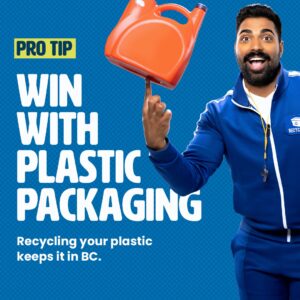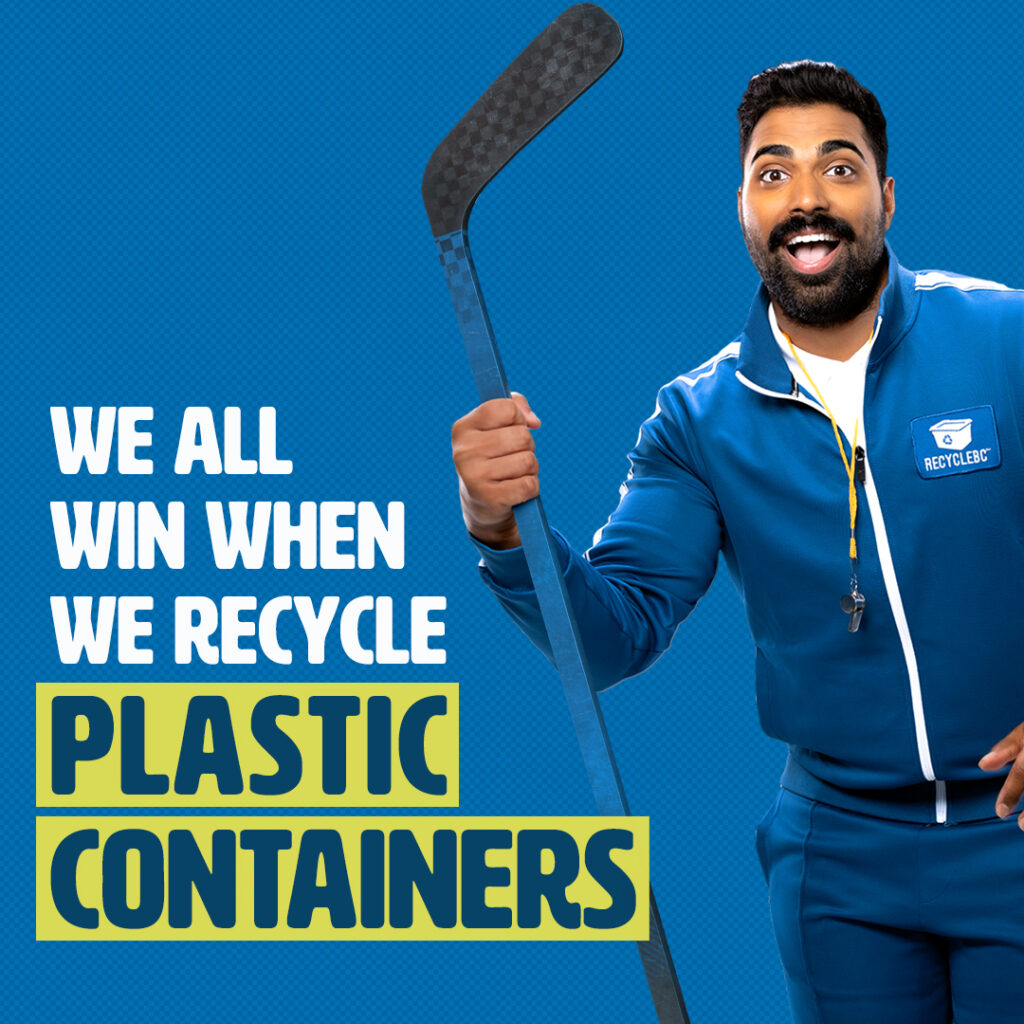Many types of plastic container packaging are accepted in the Recycle BC program, including several containers that you might not think to include, so we’ve curated a list of both common and uncommon plastic container types that can be recycled, and we explain the Recycling Process used for these materials.
For a full list of what plastic containers are accepted, along with what else you can recycle, click here.
Plastic cold drink cups and lids
Examples:
Beverage take out cups with or without lids
Best Practices:
Empty and rinse containers and remove straws
Best Recycling Option:
Curbside container recycling or a Recycle BC Depot
Plastic jugs and lids
Examples:
For milk, cooking oil, laundry detergent, fabric softener, cleaning solutions, cleaning products, body care products, windshield washer fluid, etc.
Best practices:
Empty and rinse jugs. Labels left on are OK. Remove caps and place them loose in recycling container.
Best Recycling Option:
Curbside container recycling or a Recycle BC Depot
Plastic tubs and lids

Examples:
margarine, spreads, yogurt, cottage cheese, sour cream, ice cream, coffee and tea pods, cosmetic products, cannabis product, etc.
Best Practices:
Empty and rinse tubs. Remove lids and place loose in recycling container. For single-use coffee and tea pods: Empty and rinse pods. Remove lids and do not include lids with recycling. Flatten to save space in your recycling!
Best Recycling Option:
Curbside container recycling or a Recycle BC Depot
Plastic jars and lids

Examples: peanut butter, jam, nuts, condiments, vitamins and supplements, personal care products and cosmetics, pharmaceuticals, cannabis product etc.
Best Practices: Plastic jars have wide mouths with screw-top lids. Empty and rinse jars. Labels OK. Remove lids and place loose in recycling container.
Best Recycling Option:
Curbside container recycling or a Recycle BC Depot
Plastic bottles and lids

Examples: food, dish soap, mouthwash, shampoos, conditioners and other personal care products, pills and vitamins, laundry products, household cleaners, automotive cleaners, e.g., glass cleaner, windshield washer fluid etc.
Best Practices:
Plastic bottles have screw caps or spray, pump or pull-up tops. Empty and rinse bottles. Labels OK. Remove caps, spray pump and pull-up tops, and place loose in recycling container.
Best Recycling Option:
Curbside container recycling or a Recycle BC Depot
Plastic trays, lids and clamshells


Examples:
Single-serve meals, prepared goods, bakery items, vegetable platters and berries are frequently sold in plastic trays with domed or hinged lids.
Best Practices:
Empty and rinse containers.
Best Recycling Option:
Curbside container recycling or a Recycle BC Depot
Remember, compostable and biodegradable packaging is not accepted in the Recycle BC packaging and paper product recycling program.
The Recycling Process
After plastic container waste is collected, it is transferred to a sorting facility where they are separated according to the grade of plastic:
- PET, or Polyethylene terephthalate (packaging for cosmetics, dish soaps, etc.)
- HDPE, or high-density polyethylene (squeeze bottles, vitamin bottles, etc.);
- PP, or polypropylene (plastic tubs, etc.)
- PS, or polystyrene (yogurt pots, plastic clamshells, plastic trays)
The sorted containers are then baled (squished into compact cubes for transportation) and marketed to companies for the production of new plastic products, including new packaging, fleece clothing, rope, brush bristles, household furnishing, decking, and picnic benches.
For a full list of materials that are accepted in Recycle BC’s packaging and paper product recycling program, click here.





